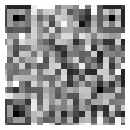Release Date:
2022-04-11
Laser drilling size and precision control of metal laser cutting machine
The control of laser drilling size and precision of metal laser cutting machine
(1) The depth control of the hole increases the laser output energy. A reasonable pulse width is used (the better the material and thermal conductivity, the shorter the pulse width should be), and the fundamental mode mode (single mode with a Gaussian distribution of light intensity) is used. ) to obtain large hole depths. For deep holes with small apertures, it is advisable to irradiate with laser multiple times, and punch holes with an objective lens with a short focal length (15-30mm).
(2) Aperture size control Using a laser with a small divergence angle (0.001-0.003rad), a small aperture can be obtained by shortening the focal length or reducing the output energy. For high melting point. Materials with good thermal conductivity can realize the processing of tiny holes with a diameter of 0.01-1mm, and the minimum diameter can reach 0.001mm.
(3) Improve the roundness of laser processing holes. The laser mode adopts fundamental mode processing, and the focusing lens uses aspheric aberration objective lens, and the optical axis of the lens coincides with the optical axis of the laser beam. Machining roundness.
(4) Reduce the taper of the hole. Usually, the taper of the hole increases with the increase of its aperture ratio. Use appropriate laser output energy or small energy for multiple irradiation, short focal length, small lens refractive index and reduce incident light and light. Measures such as the angle between the shafts can reduce the taper of the hole.
Metal laser cutting machine using flying light path, during the cutting process, only the cutting head moves along the X and Y directions, and the position of the worktable is fixed. In addition, there is a fixed optical path flying beam transmission form of the hinged movable arm, which is called the constant flying optical path, and is referred to as the constant optical path for short. From the drive mode of the equipment, there are X and Y axes that use unilateral servo motors to configure corresponding reducers, and use high-precision rack and pinion drive structures; both sides of X axis use servo motors to configure corresponding reducers, and use high-precision The rack-and-pinion drive structure has double gears to eliminate backlash; there is a servo motor equipped with a high-precision ball screw for direct drive, and a disk-type large inertia motor for direct gear wheel and rack drive; and The structure is directly driven by a linear motor. The lasers configured by the equipment should be selected according to the user's processing performance, processing materials, shapes, and sizes. The optional lasers include co2 axis fast flow lasers, RF board debugging lasers, swirl lasers, solid state lasers, etc. Lasers and fiber lasers, etc.
Related News

"Long winds and waves, long history!" Changchang Laser marched forward bravely, deeply cultivated in the field of metal forming machine tools, helped the transformation and upgrading of the manufacturing industry, and jointly created a great cause of rejuvenation!

Follow official WeChat



2022 Dongguan Changchang Laser Intelligent Equipment Co., Ltd. All rights reserved 粤ICP备18038369号





